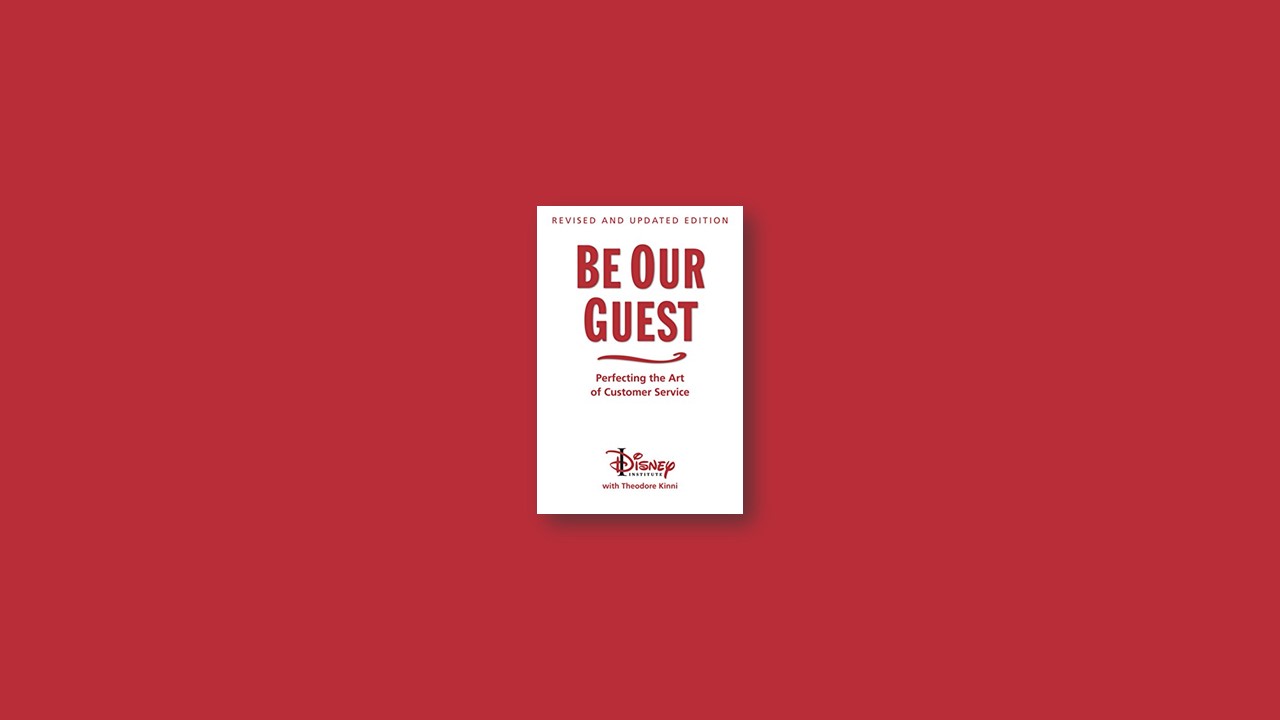Disney’s Approach to Quality Service

Compass Point 1: Guestology
Guestology is what Disney calls the art and science of knowing and understanding customers.
It is the first point on the compass because the needs, wants, perceptions, and emotions of guests are the basis for the action that takes place in all of the other points. Guestology establishes an initial course of action, and as new customer information is gathered, that data is used to fine-tune and improve performance.
Guestology enables organizations to provide a context for their service strategies. In what sense does Disney seek to exceed guest expectations? Disney doesn’t try to provide the least expensive products and services; Disney wants to provide high-quality entertainment. Nor do they try to provide the fastest service; they could eliminate wait times in our parks by speeding up the rides, but in many cases, that would ruin the fun. The context within which they seek to exceed expectations is happiness.
At Disney, we try to create happiness for people of all ages everywhere. This common purpose is a rallying flag. It aligns the efforts of cast members and establishes a foundation for their own behavior toward guests. For management, making guests happier than they expected to be is a guiding precept. Every decision can be measured against it. Whether a decision supports the common purpose is an important managerial litmus test.
Compass Point 2: Quality Standards
Once you have defined your service goals, you can begin to consider quality standards, the second point on the Quality Service Compass. Quality standards serve two purposes:
- Establish the criteria for actions that are necessary to accomplish the service strategy
- Serve as the measures of Quality Service.
At the Disney resorts and parks, there are four quality standards. In order of importance, they are safety, courtesy, show, and efficiency. They are ordered in strict priority, which further guides the efforts of cast members and helps facilitate decision-making at the parks.
Compass Point 3: Delivery Systems
With a common purpose and quality standards in place, the next point in the Quality Service Compass is delivery systems. There are three service-delivery systems that all companies share: their employees, their setting, and their processes.
#1 Cast: In the past few decades, organizations everywhere have begun to understand that their employees are their most important asset. This is particularly true in the delivery of Quality Service. Often, employees are on the front lines, face-to-face with customers. And even when they are not in direct contact with customers, they are controlling the operation of the processes by which service is delivered. For example, the Disney theme parks have been measuring the impact of cast on the guest experience for more than fifty years. What is one of the most-often stated reasons why guests return for another visit? The cast.
“Disney Imagineers go to great lengths to make the theme parks feel intimate, but it’s the cast members who really make it work,” says Jeff James, Vice President, Disney Institute. “A $200 million attraction won’t be fun if the cast member at the front is less than pleasant.” This statement and the results behind it would have surely resonated with Walt. After all, a friendly, approachable, and helpful cast was an important element in his vision for a new kind of amusement park from the outset.
Preparing the cast to deliver Quality Service is an essential task that starts with the introduction and dissemination of a generic, organization-wide set of image and behavioral standards. At Disney, every new cast member learns these performance tips during their first on-the-job experience, the Disney Traditions orientation program. One aspect of this training that you have already been exposed to is its language. The very words that are used to describe customers, work, employees, and so on suggest the way in which cast members will be expected to approach their roles.
As in other organizations, Disney’s 150,000 cast members play a huge number of different roles. So a large part of the work of equipping the cast with the information and tools they need must be conducted on the job. This requires the creation of location-specific performance cultures. A performance culture is a set of behaviors, mannerisms, terms, and values that are taught to new cast members as they enter their job location.
#2 Setting: The second service-delivery system is the setting in which you conduct business. Your setting is wherever your customers meet you. Whether that is a retail store or a hospital or a Web site or a telephone call center, the setting that customers encounter plays a critical role in how they perceive their experience with your organization. The importance of managing the effect of setting on the guest experience can be summed up in two words: Everything speaks.
Here’s a quick example from Disney’s history. John Hench, one of the original Disney Imagineers (the folks who design and build all of Disney’s theme parks), remembers watching Walt finesse a setting: “I was so astonished by the way Walt would create a kind of live-action cross-dissolve when passing from one area of Disneyland to another. He would even insist on changing the texture of the pavement at the threshold of each new land because, he said, ‘You can get information about a changing environment through the soles of your feet.’”
In Disney theme parks, “everything speaks” means that every detail—from the doorknobs to the dining rooms—sends a message to guests. That message must be consistent with the common purpose and quality standards, and it must support and further the show being created. The next time you are in the Magic Kingdom, have some fun and pay attention to what your feet sense as you walk from one themed area to the next.
#3 Process: The third service-delivery system is process. Processes often encompass and utilize both cast and setting, and they comprise the most prominent service-delivery system in most organizations. At Disney theme parks, service processes include moving guests through the attractions, the check-in and checkout processes at the hotels, and the response to emergencies, such as medical problems and fires.
There are combustion points in every process. These are spots where even a finely tuned process can break down (especially when several hundred thousand guests are straining its capacity) and, instead of contributing to a positive customer experience, begin to turn a guest’s good day into a bad one. It’s impossible to completely eliminate combustion points, but the goal is to stop them from turning into explosion points.
One example Disney facilitators like to use involves a common parking problem. After a long day of fun, guests often forget where they left their car. The lots are labeled, the rows are numbered, and the trams that shuttle guests to the entrance announce the parking location several times, but inevitably and regularly cars are misplaced.
Instead of leaving tired guests forlorn and wandering, members of the parking lot cast came up with a service patch. Since the parking lots are filled in order, the tram drivers started keeping a simple list of what row they were working at what time in the morning. The lists are copied and distributed to members of the parking cast at the end of the day, so if guests can remember about what time they arrived (which they usually can), a cast member can tell them about where they parked. Combustion point defused and service hero created!
Compass Point 4: Integration
The last point in the Quality Service Compass is integration. Integration means quite simply that the three delivery systems are combined and aligned to create a complete operating system. Cast, setting, and process are merged in pursuit of the service strategy.
The result: an exceptionally high-quality guest experience that drives the success of all organizations known for service excellence.


